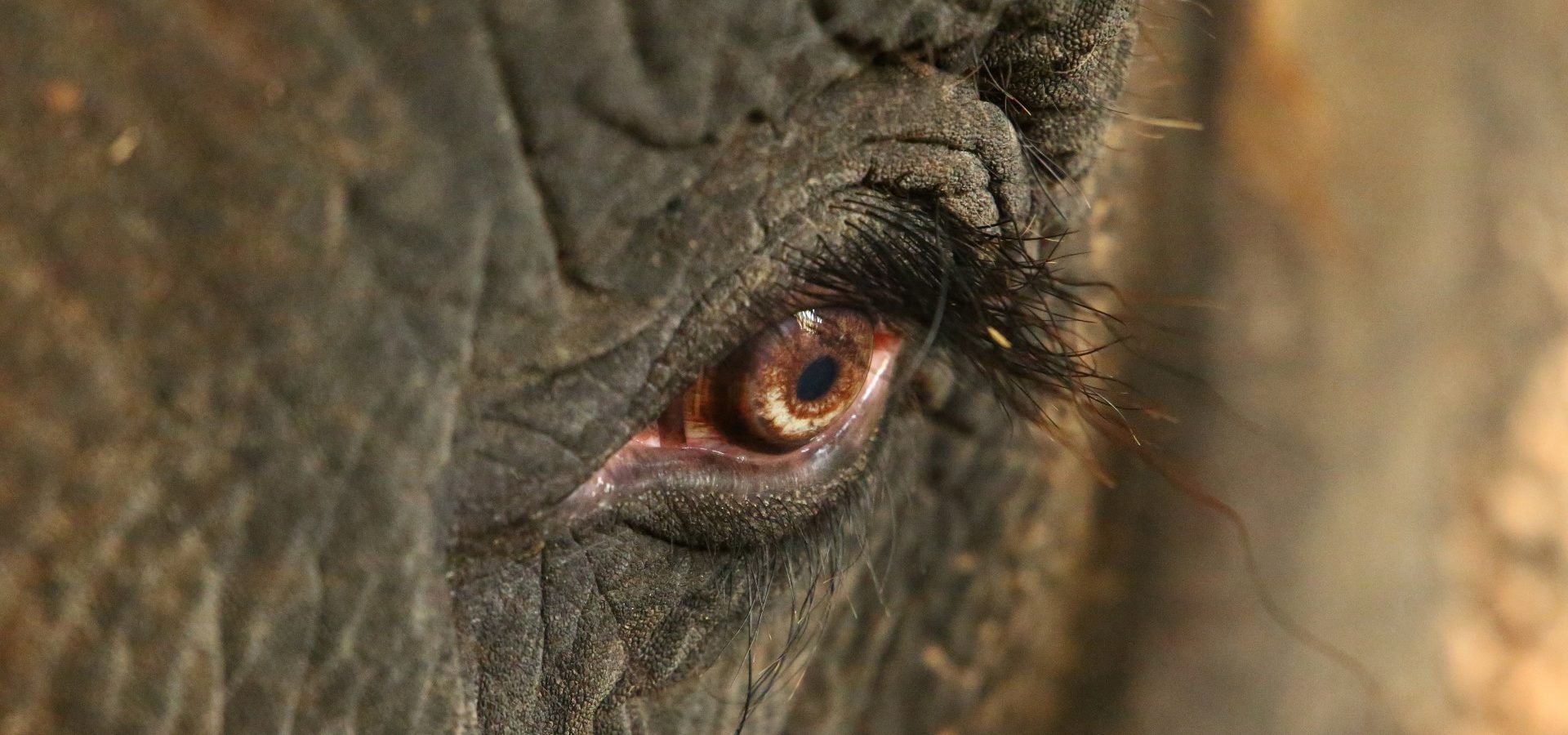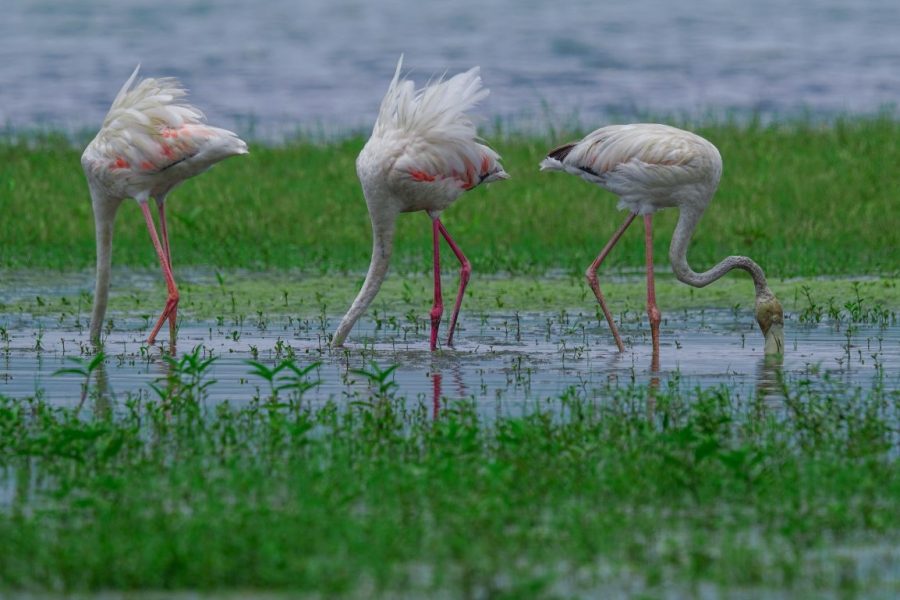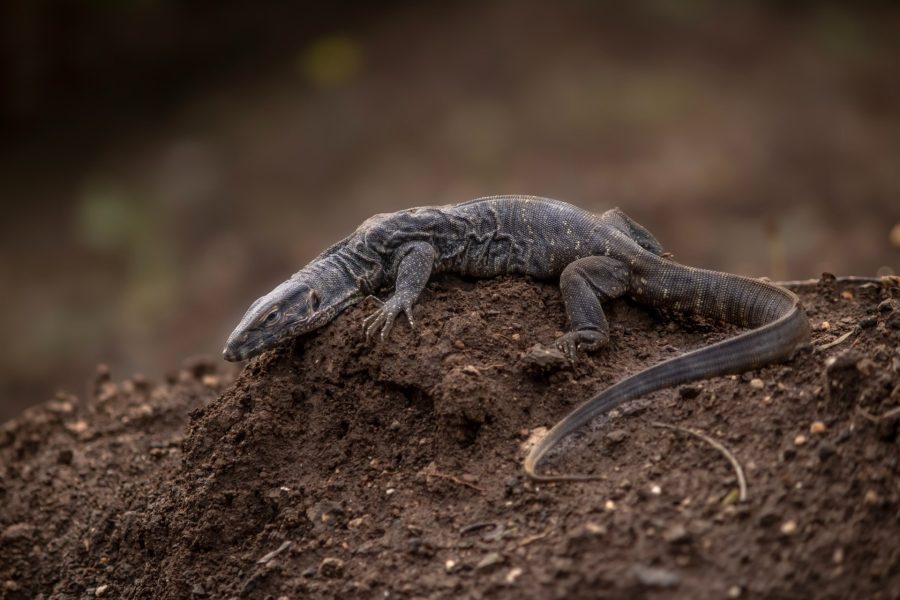Eyes are windows to the world. For numerous captive Asian elephants, these windows are shattered, leaving them wholly dependent on humans for lifelong care. Over the years, as Wildlife SOS has and continues to rescue injured, crippled, or geriatric elephants from various stressful situations, the most common problem plaguing captive elephants have been found to be ocular disorders and diseases. While cataract or corneal ulcers can be addressed, elephants often suffer from disorders in the retina, cornea, and lenses that make the eye irreparable. This makes daily medical treatment an integral part of caring for our majestic pachyderms.
In most of our rescued resident elephants, ocular ailments are a result of the unnatural and brutal conditions they were unfairly subjected to.
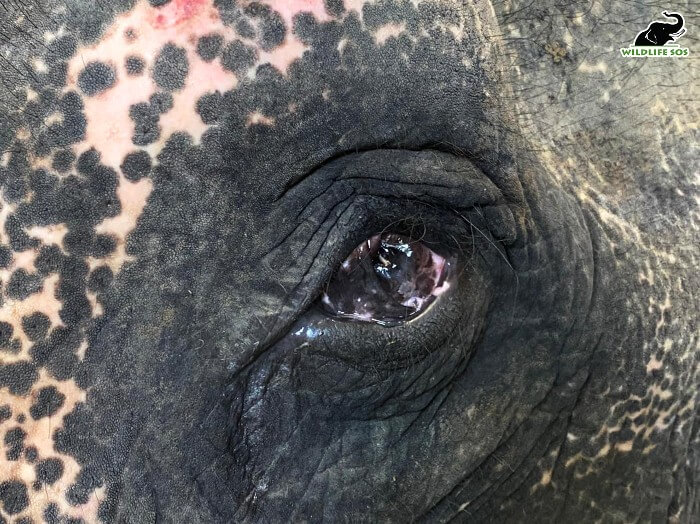
Take, for example, Nina. This geriatric elephant spent most of her life walking for wedding processions or begging. When Wildlife SOS rescued her in 2021, we consulted Dr. Claudia Hartley, a renowned veterinary ophthalmologist from the UK. Dr. Claudia found that Nina’s left eye had almost collapsed: With no clear eyeball structure visible, her left eyesight was bound to end. The lens in her right eye had detached from its intraocular structure. The retina, though in place, was shrinking. While the axial length of an elephant’s eyeballs should be 3-3.5cm, Nina’s right eyeball is about 1.5 cm. The most astonishing discovery by Dr. Claudia was that Nina’s eyeballs were perforated, which meant that in all likelihood, she was intentionally blinded.
Sadly, Nina’s story is not an isolated one. Captured elephants are often blinded by their owners to make them docile and gain sympathy from riders for financial sustenance. Wildlife SOS has rescued elephants suffering from a similar plight, one of whom was Lakhi, a 60-year-old elephant who was first blinded and then made to beg.
Blindness is also often caused by an injury that goes untreated, or by severe malnutrition. Such was the case with Arya, who suffered from both. Our veterinary team discovered that her left eyeball had been ruptured by a bullhook, possibly when she was merely a young calf. Her right eye, however, succumbed due to severe malnutrition. Almost 70 years of age, Suzy is the oldest elephant under our care. She lost her vision because her previous owners did not provide her with sufficient nutrition.
Apart from blindness, cataract is another major ocular disease rampant among captive Asian elephants. Cataract is an opaque cloudy film that forms over the lens of the eye. This film prevents light from passing through the lens and hinders the formation of a clear image. Humans too struggle with this condition which can often be tackled with surgery. In elephants, however, untreated cataract has extreme consequences like collapsing eyeballs or shrunken eyes. This makes the cataract impossible to rectify. Our ‘gentle giant’ Phoolkali, is completely blind in her right eye owing to an untreated cataract.
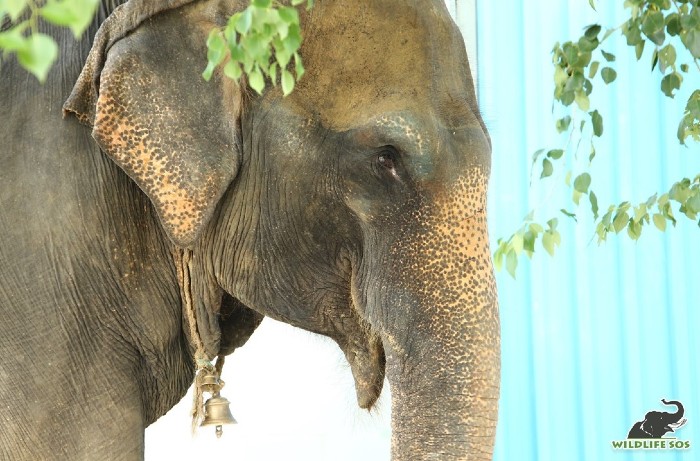
In cases where cataract hasn’t reached its dire stage, the surgery of elephants is still risky. Any procedure that requires complete anesthesia can be detrimental to the overall well-being of the animal. Even after the operation is successful, it is the post-operative care that becomes tricky. Elephants are used to reflexively rubbing their eyes and flinging dust on themselves. If they do so after a surgery, these actions are likely to cause infections in their eyes. Even in the most supervised environments, these habits are unlikely to be controlled. Keeping all this in mind, Wildlife SOS has not operated on the elephants in our care.
Other ocular conditions that are common to rescued elephants include uveitis (eye inflammation), keratitis (inflammation of the cornea), and partial blindness. Older elephants are more susceptible to bacterial and fungal infections, while younger elephants may develop corneal ulcers or keratitis.
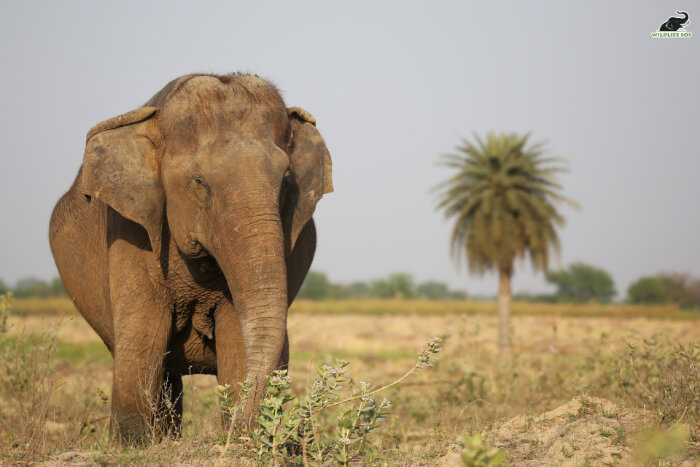
Managing elephants with ocular ailments is a mammoth task involving daily medical treatment. For many of our rescued elephants, this means administering eye drops regularly to lubricate the eye along with cleaning tear duct pockets, which if left unattended, can cause eye irritation and further deterioration. Their diet is also curated keeping their eye health in mind: By incorporating antioxidants and Vitamin A and D supplements, eye disorders can be significantly contained.
Caring for elephants with a lack of vision entails creating a safe and healthy environment for them, where they can use their other vital senses to navigate their way.
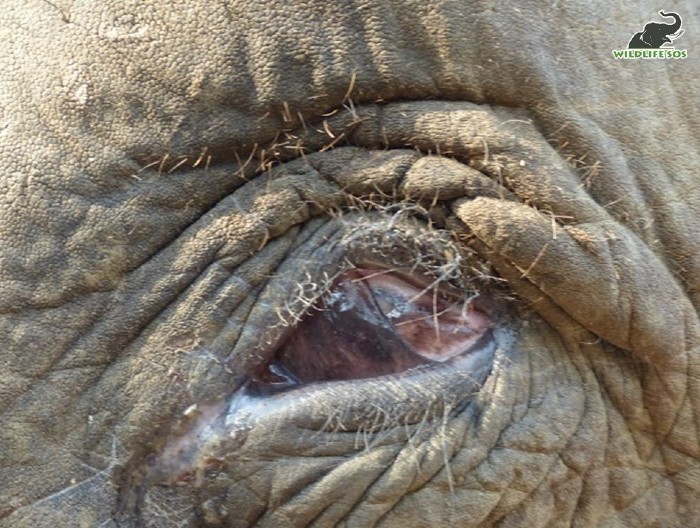
Click HERE to read more about how we at Wildlife SOS provides care for blind elephants!
Veterinary ophthalmology has not taken as many strides as other aspects of veterinary medicine have. Thus, ocular diseases and disorders in animals continue to be a field of exploration for many in India; a field our veterinary team is willing to delve into.
Currently, we are seeking funds for a tono pen, a tool used to determine intraocular pressure. Click HERE to donate towards Elephant Care & Treatment.

